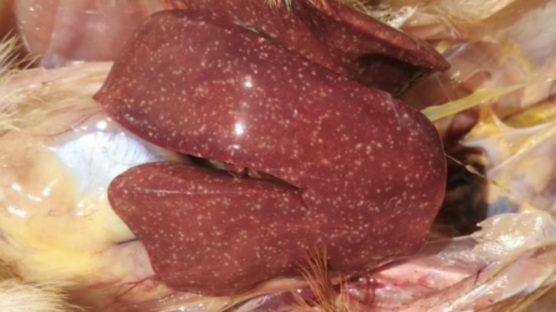
Published on Nov. 28, 2024
Building a Barrier: Effective Biosecurity Measures Against HPAI
Preventing Highly Pathogenic Avian Influenza (HPAI), commonly known as bird flu, is critical to protecting poultry populations and ensuring the health of the global egg supply. The most effective strategy in combating HPAI is through strong biosecurity measures. Here’s a detailed look at the best practices for prevention, focusing on biosecurity:
- 1. Control Access to Poultry Farms
- Limit farm access to essential personnel only. Visitors, including service providers and delivery drivers, should follow strict hygiene protocols.
- Use disinfection stations at entry points, requiring all visitors to wear clean, sanitized boots, coveralls, and gloves.
- Establish a footbath system with effective disinfectant at every entry point to clean footwear.
- Ensure all vehicles entering the premises are thoroughly disinfected to prevent any potential virus introduction.
- 2. Segregate Flocks
- Keep different types of poultry separated (e.g., layers, broilers, and breeding stock) to prevent cross-contamination between species that may have varying susceptibilities to HPAI.
- Avoid contact between commercial poultry and wild birds, which are the primary carriers of HPAI. Install protective netting or screens to keep wild birds away from flocks.
- 3. Monitor and Control Movements
- Track all movements of poultry, feed, and equipment in and out of the farm. Any new birds introduced to the farm should undergo a quarantine period to monitor for signs of disease.
- Use a closed-house system whenever possible, ensuring that the poultry houses are well-sealed to avoid exposure to wild birds or contaminated air.
- 4. Maintain Good Hygiene and Sanitation
- Regularly clean and disinfect all poultry houses, equipment, and vehicles used for poultry transport.
- Provide clean water and feed by covering and protecting these from contamination by wild birds or rodents.
- Dispose of manure and dead birds properly through incineration, composting, burning, or burying, ensuring that disposal sites are far from the farm to avoid attracting wild birds or scavengers.
- 5. Implement Strict Personal Hygiene Protocols
- Farm staff should wear dedicated clothing and footwear that is only used on-site. After work, they should change out of these clothes and clean themselves thoroughly. Make sure that for every barn, dedicated footwear is available.
- Ensure workers disinfect their hands before and after handling poultry or entering poultry areas. Use hand sanitizers and gloves to prevent virus spread.
- 6. Wild Bird and Pest Control
- Wild birds, especially migratory species, are known carriers of HPAI. Preventing wild birds from accessing the farm is vital. Install bird netting and screens around the poultry houses to reduce exposure.
- Develop an effective rodent and insect control plan to limit the presence of pests that can carry the virus or compromise biosecurity.
- 7. Early Detection and Reporting
- Conduct regular health checks on poultry and ensure workers are trained to recognize the symptoms of HPAI, including lethargy, respiratory distress, swelling, and sudden death.
- Immediately report any signs of HPAI illness to your veterinarians or local agricultural authorities to prevent the virus from spreading further.
- 8. Training and Communication
- Ensure that all farm staff are thoroughly trained in biosecurity measures and understand the importance of HPAI prevention. Regular updates on new procedures and threats should be shared.
- Communicate with neighbouring farms to ensure they’re also practicing good biosecurity. Collaborative efforts can help protect entire regions from outbreaks.
- 9. Additional Preventative Measures:
- Vaccination Programs: While biosecurity is the first line of defense, vaccination against HPAI can be a supplementary measure in high-risk regions or during an outbreak (restricted to companies that allow vaccination against HPAI).
- HPAI Surveillance Programs: Participate in local or national surveillance efforts to detect HPAI outbreaks early. Routine testing of birds can help identify infection before it spreads widely.
To conclude, biosecurity is the foundation of preventing HPAI outbreaks. The virus is highly contagious, and even a small breach in biosecurity can lead to devastating consequences for a farm, a region, or even an entire industry. Despite the most rigorous biosecurity measures, there is still a possibility that HPAI can arise on a farm, given the unpredictable nature of the virus and its various transmission routes. However, by adopting comprehensive strategies—such as controlling access, maintaining high levels of hygiene, and closely monitoring poultry health—farmers can significantly lower the risk of an outbreak. While no prevention plan is flawless, these practices ensure that farmers have taken every necessary step to protect their flocks, their livelihood, and the broader community from the threat of HPAI.

Multi-age Farms
Multi-age farms, where birds of different ages are housed on the same site, pose unique biosecurity risks. Older birds can serve as reservoirs for pathogens that may not yet affect them but can infect younger, more vulnerable birds. This age mixing increases the chances of disease spread, as younger birds are typically more susceptible to infections. To mitigate these risks, multi-age farms must enforce strict biosecurity protocols, including segregating age groups, enhancing cleaning and disinfection between flocks, and closely monitoring for signs of illness across all age groups.
Further Reading:



